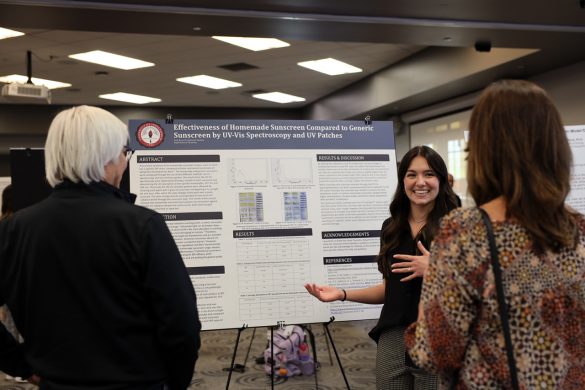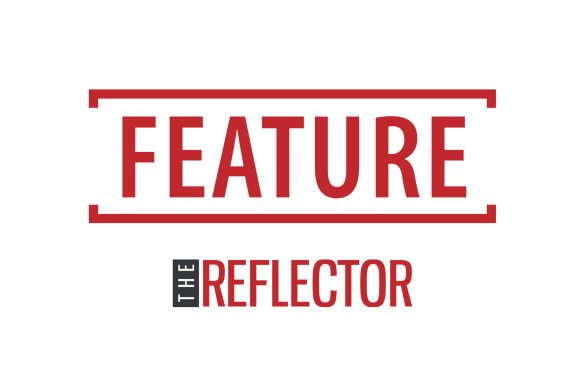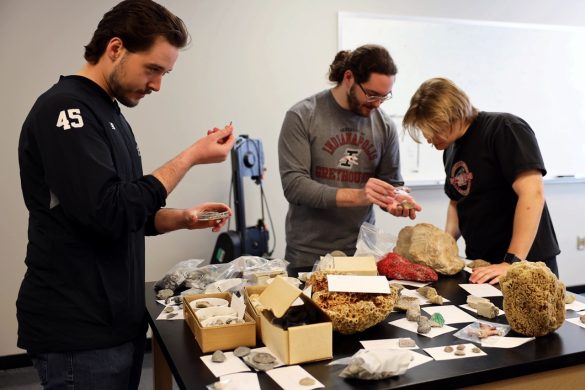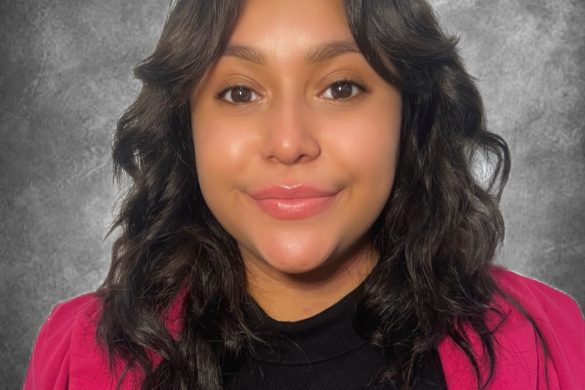Art lovers and mental health advocates alike were treated to an immersive, student-led art exhibition at University of Indianapolis. “Origins of Healing,” held by UIndy’s Art Therapy Student Organization, went from Feb. 9 through 22, according to a flyer put up by the registered student organization. The exhibition displayed art from UIndy graduate students and was in the Art & Design Annex’s Dee Schaad Student Gallery
UIndy art therapy graduate student and President of ATSO Olive Harmeyer said they were the curator for “Origins of Healing.” The exhibition was a part of one of the larger projects the RSO puts on, according to Harmeyer, and was an opportunity to bring the artists and local community together. Harmeyer said the exhibition was a way for artists to highlight life-changing moments in their lives.
“I sort of wanted to play on that with the idea of narrative art therapy, which is sort of understanding the individual and their story of existence,” Harmeyer said. “So, with that idea, I asked for everyone to send in pieces of work that were very sentimental to them about their development, not only as an artist but also as an art therapist. There’s a very common theme with our therapists where, during undergrad, we make a lot of art about ourselves and our healing process and we sort of learn about art therapy through making art that is healing to us, by putting our trauma and our difficulties in life and our feelings and emotions onto a canvas or into a sculpture or into an illustration.”
According to Vice President of ATSO and art therapy graduate student Hannah Krodel, who was also a featured artist, the pieces she submitted were a way to convey her physical struggles. She said her pieces “By Candlelight” and “The X-Ray” were created during her time as an undergraduate.
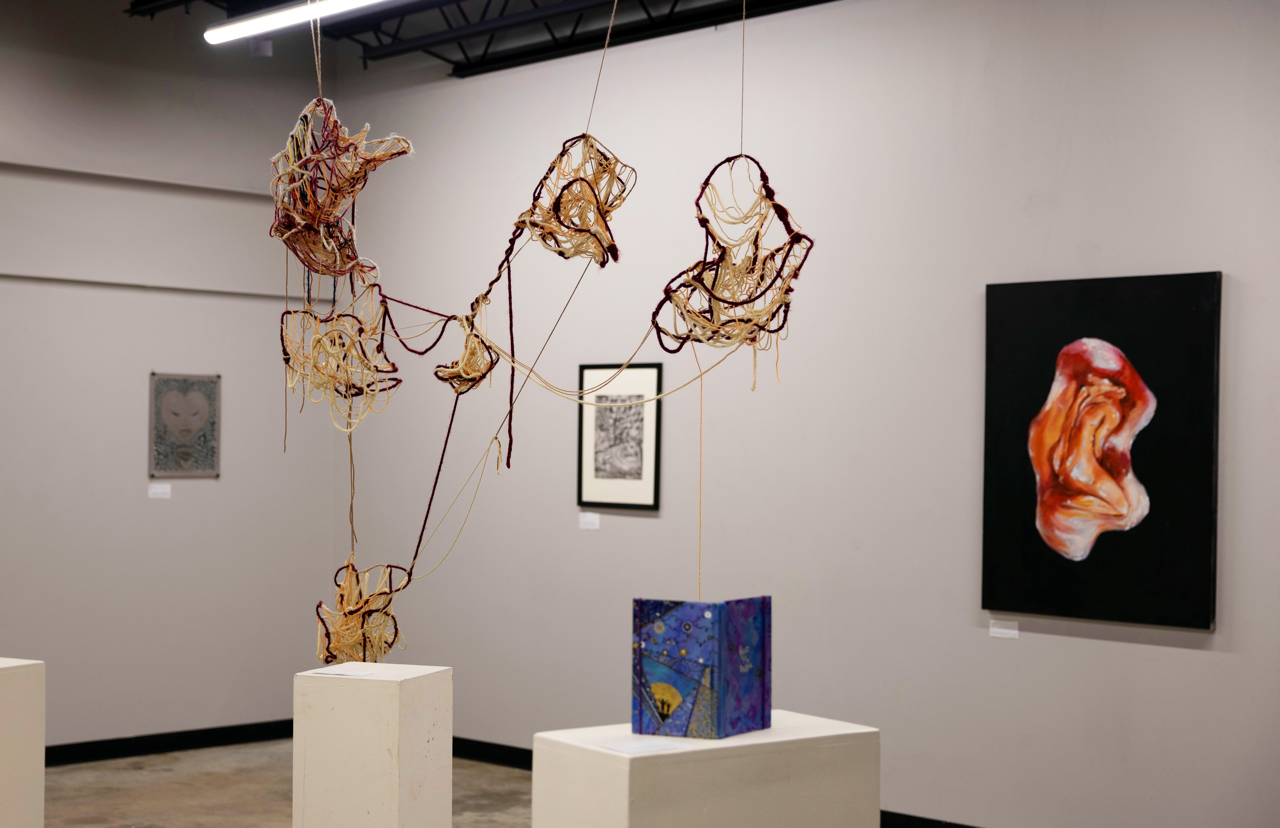
“They are actually about my scoliosis and how I handled that,” Krodel said. “A lot of times when I make art, I don’t know what it’s about until I analyze it afterwards. With the one that sort of looked like an X-ray, I knew what that one was about, but the other one about the doll, the way I positioned her is how sometimes I have to position myself to help my lower back stop hurting and things like that.”
Like Krodel, Harmeyer said their work came from their time as an undergraduate student. Their painting “Rebirth” is inspired by their identity as a nonbinary person, according to Harmeyer, and their interactive sculpture is also inspired by their identity. During the pandemic, Harmeyer said they had to metaphorically rebirth themselves after coming to terms with their gender expression.
“‘Rebirth’ was a painting about me coming to the realization that I was nonbinary, which I have been out as a queer person since I was 13 or 14,” Harmeyer said. “So, that was already always deeply ingrained in my identity and I never really felt like I had to come out, it just sort of happened. Meanwhile, being nonbinary… I love women and I identify with women to an extent, but it never felt right and I felt like a fraud, but I just assumed it was because I was queer … I sort of felt like I had to have a rebirth when I had to have a coming out.”
Krodel said that art therapy, much like what was displayed at “Origins of Healing,” is a good way for her to cope. During Krodel’s time as an undergraduate, she studied behavioral sciences and, according to Krodel, there is a link between art therapy and sociology.
“I feel like art is integral to what human beings are,” Krodel said. “We’ve been making art since we were cavemen, putting hand prints on the caves and stuff … I really liked learning about anthropology, sociology and psychology—all of it. So I was really interested in all of the different subjects and how it ties together and how I can help people through the arts.”
Harmeyer said exhibitions such as “Origins of Healing” show that student-facilitated galleries are integral to the local artistic community. All art should be seen, according to Harmeyer, and UIndy has helped them develop as an artist through these types of opportunities. Harmeyer said ATSO values the healing properties of art and people as unique individuals—clients and therapists alike.
“It was so healing for us—and now we want to spread that to other people,” Harmeyer said. “I think that the show has embodied that as much as I feel like I, as the curator, attempted to infuse as much of that into the show as possible without shoving it in your face.”
According to the flyer, the exhibition had a closing reception on Feb. 16 from 5 to 9 p.m., and while the event may be over, Krodel said she hopes viewers can not only see how art therapists can advocate for themselves, but how they can also gather inspiration for their expression.
“I hope that they get some inspiration about how art could be a way that they could express themselves and deal with the issues they’re going through,” Krodel said. “If they have a disability or some medical issue going on, my pieces might inspire them in that way, or the other pieces might inspire people in different aspects of their life.”

